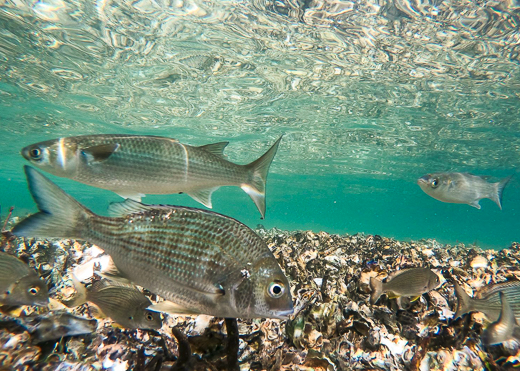Did you know that colonial Sydney was built on a foundation of oysters?

It is estimated that 99% of oyster reefs that were once present in NSW are now extinct.
That’s according to NSW Department of Primary Industry Fisheries Manager Charlotte Jenkins, who recently presented for the State Library NSW seminar series “History Matters – Saltwater Histories” exploring the rich history of natural shellfish reefs in NSW.
The presentation (now available on YouTube) details the historical loss of oyster reefs across NSW, the importance of oyster reefs for water quality and fish habitat, and the effort underway to restore them.
Ms Jenkins said early colonists started excavating oyster reef shells for lime which was used to make mortar for building.
“When Europeans arrived in Sydney, they needed lime for building, not finding any lime quarries, they turned to the living oyster reefs and oyster beds that were plentiful at the time which they burnt for lime,” she said.
Hyde Park Barracks and Vaucluse House are two of Sydney’s historical buildings where you can still see the shelly oyster mortar used in their construction today.
Ms Jenkins said the use of oysters for construction, coupled with oysters being harvested as a food source, led to the demise of huge oyster reefs, not just in the Sydney region, but up and down the NSW coast.
“That was the start of the decimation of a whole ecosystem. It is estimated that 99% of oyster reefs that were once present in NSW are now extinct,” she said.
“We now know how important oyster beds and oyster reefs are. But at that time, they were just seen as a resource,” she said.
Scientists have since learnt the importance of oyster reefs both in improving water quality and in boosting fish numbers.
“Oysters, as filter feeders, filter water as they pump it through their bodies. They are small creatures, but they have a huge impact. When you think of them in a reef, there may be millions of them, the amount of water they are filtering every day is phenomenal,” Ms Jenkins said.
Not only do the oyster reefs improve water quality, but they also provide vital habitat for fish.
“We are learning more and more about how incredible oyster reefs are for fish and other marine life,” Ms Jenkins said.
Ms Jenkins said this is why it is important to try and restore oyster reefs in estuaries in NSW.
“Given the loss of oyster reefs across NSW, their importance in improving water health and fish stocks, restoring oyster reefs is a step in the right direction,” she said.
If you want to learn more about the fascinating history and science of oyster reefs in NSW check out Ms Jenkin’s presentation at the Saltwater Histories recording (below).
Ms Jenkins is the team leader of the Oyster Reef Restoration project.
The NSW Marine Estate Management Strategy funds the Oyster Reef Restoration project.








